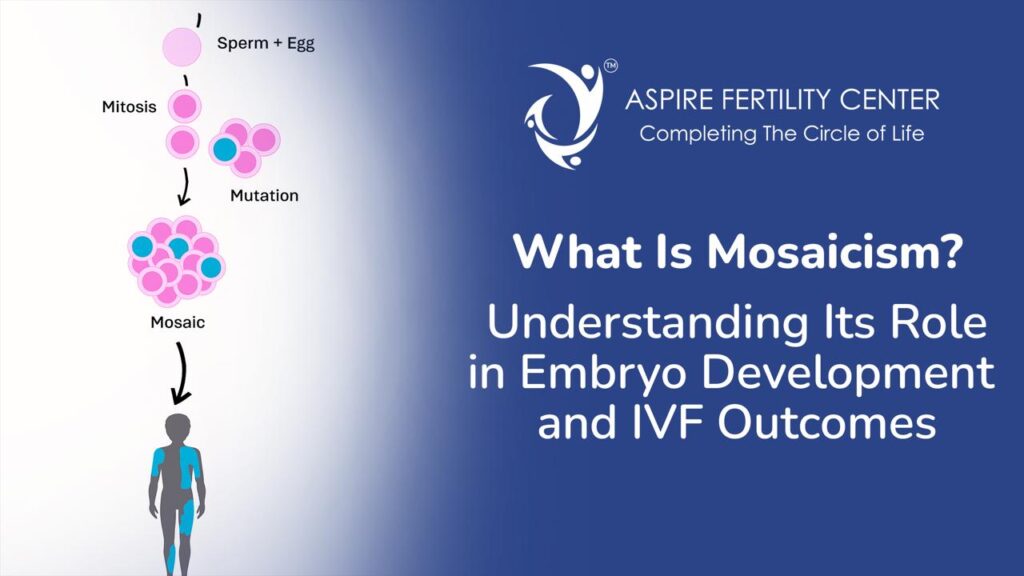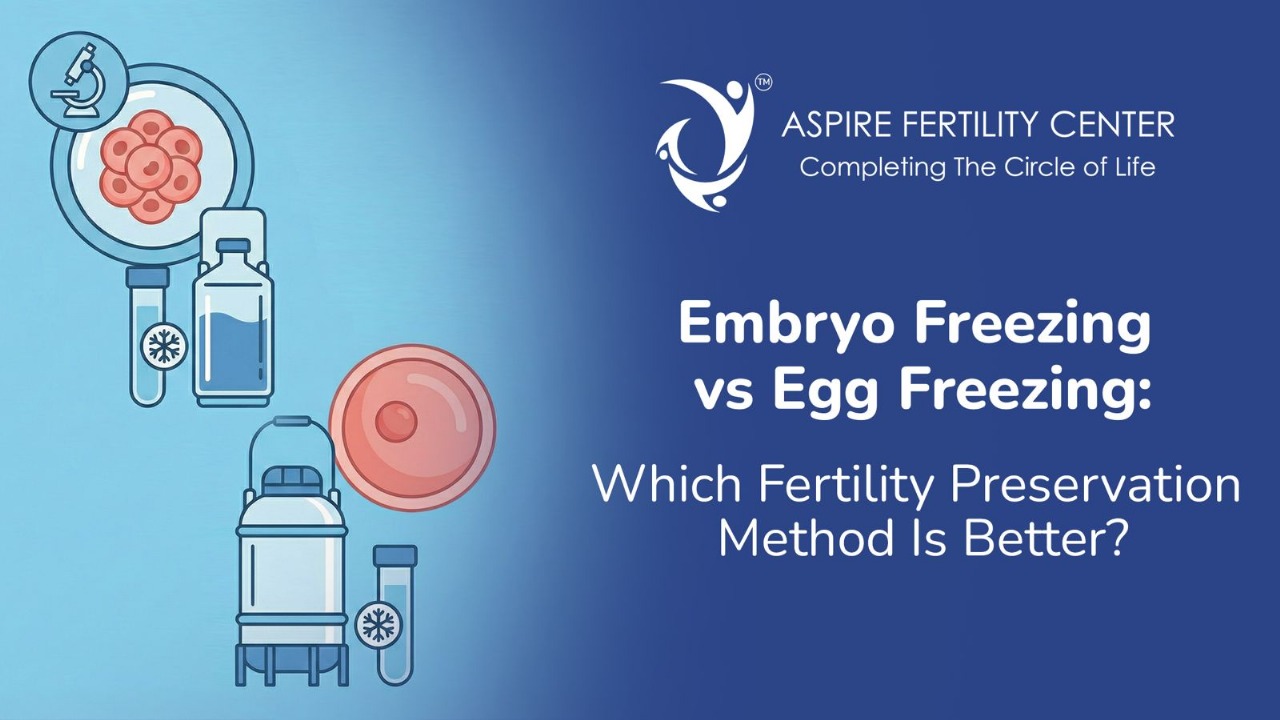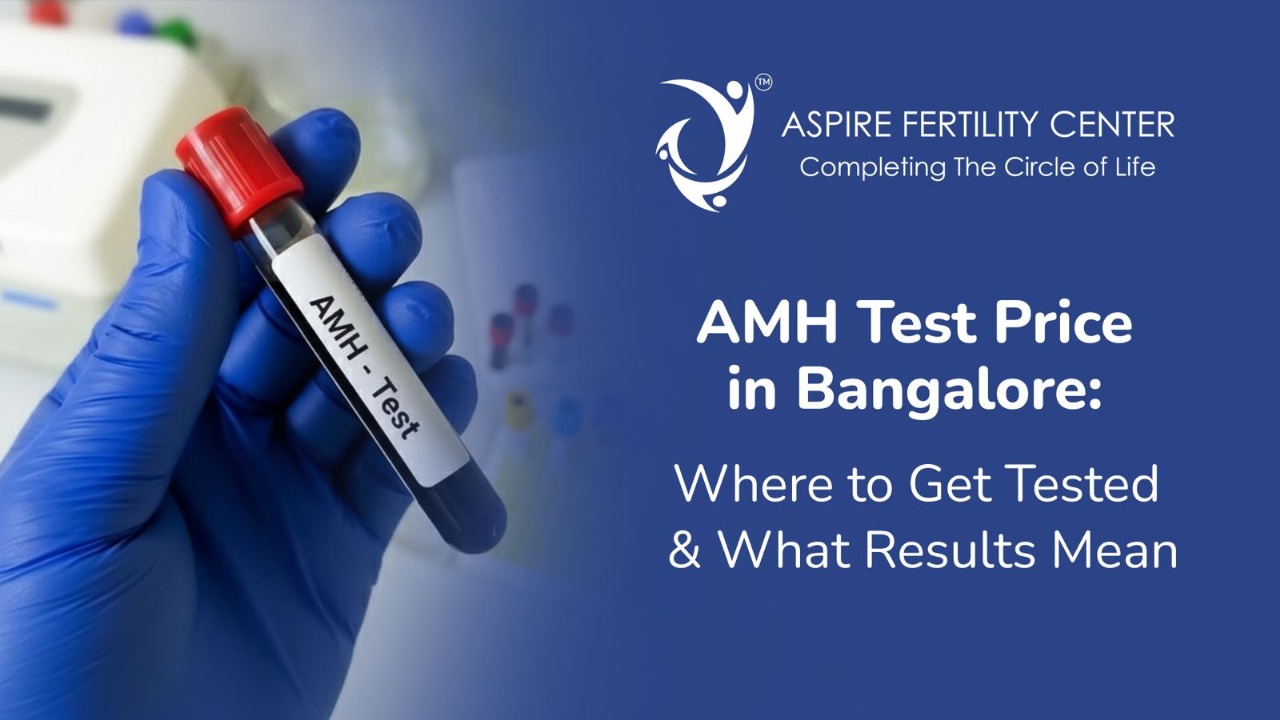
What Is Mosaicism? Understanding Its Role in Embryo Development and IVF Outcomes
When you’re navigating an IVF journey, you may come across the term mosaicism—but what exactly does it mean, and how it might affect your IVF embryo transfer? Here’s a clear, approachable guide to embryo mosaicism, with balanced explanations to keep you informed without overwhelming you.
Mosaicism describes an embryo that contains two distinct cell populations:
- Euploid cells are those with the normal chromosome count (46 in humans).
- Aneuploid cells have missing or extra chromosomes (for example, an extra copy of chromosome 21).
Picture a mosaic tile artwork: different colored tiles combine to form a whole image. Similarly, a mosaic embryo is made up of both normal and chromosomally abnormal cells. Depending on how many abnormal cells are present, the embryo may be labeled “low-grade mosaic” or “high-grade mosaic.”
How Mosaicism Occurs
Mosaicism arises in the first few days after fertilization:
- Mitotic errors during rapid cell divisions can misallocate chromosomes, creating aneuploid daughter cells alongside euploid ones.
- Some embryos show signs of self-correction, where aneuploid cells are selectively removed through programmed cell death, or “rescued” by rebalancing chromosome copies.
Lab environment factors—such as minor fluctuations in temperature or culture medium—can subtly influence division fidelity. At Aspire Fertility Center, we minimize these stresses with advanced incubators, rigorous monitoring, and stable culture conditions.
Detecting Mosaicism with PGT-A
To determine whether an embryo is euploid, aneuploid, or mosaic, we rely on Preimplantation Genetic Testing for Aneuploidy (PGT-A):
- Trophectoderm biopsy: On Day 5 or 6, we gently extract a few cells from the embryo’s outer layer.
- Next-generation sequencing: Those cells are analyzed to reveal the proportion of normal versus abnormal chromosomes.
- Classification: Results categorize embryos into three groups—euploid, aneuploid, or mosaic—based on the percentage of abnormal cells detected.
Biopsy samples only a small segment of the embryo, so while PGT-A is highly informative, it’s not a perfect mirror of every cell in the inner cell mass that forms the fetus. Still, it remains our most reliable tool for IVF embryo genetic assessment.
Categories of Mosaic Embryos
Clinically, we break down mosaic embryos by two main factors:
- Grade
- Low-grade mosaic: Usually under 30% of cells are aneuploid.
- High-grade mosaic: Over 50% aneuploid cells.
- Low-grade mosaic: Usually under 30% of cells are aneuploid.
- Complexity
- Single-chromosome mosaic: Only one chromosome shows abnormality.
- Complex mosaic: Multiple chromosomes are involved.
- Single-chromosome mosaic: Only one chromosome shows abnormality.
Evidence suggests that low-grade, single-chromosome mosaics often behave similarly to euploid embryos in terms of implantation and development.
Impact of Mosaicism on IVF Outcomes
Understanding how mosaicism affects success rates can shape your expectations:
- Implantation potential
Low-grade mosaic embryos offer implantation rates around 30–40%, compared to 50–60% for fully euploid embryos. That means a good chance—but slightly lower than normal. - Pregnancy and live birth rates
Many low-grade mosaics result in healthy live births, with rates in the 25–35% range. High-grade or complex mosaics carry a higher risk of miscarriage, so they’re considered more cautiously.
Safety and health of the baby
Transfer of mosaic embryos has been linked to a small uptick in chromosomal anomalies at birth, so we recommend follow-up prenatal screening—such as non-invasive prenatal testing (NIPT)—to confirm fetal health.
Guiding Your Mosaic Embryo Transfer
At Aspire Fertility Center, we believe in a personalized, evidence-based approach:
- Embryo ranking: We recommend transferring euploid embryos first, then low-grade mosaics, and only consider high-grade mosaics when no other options remain.
- Single-embryo transfer (SET): To reduce multiple-pregnancy risks, we usually transfer one embryo at a time—even for mosaics.
- Chromosome-specific counseling: If a mosaic involves a sex chromosome (X or Y), for instance, the potential impact differs from an autosome; we explain these nuances so you can decide with clarity.
- Close monitoring: After transfer, we support you with tailored prenatal screening schedules to ensure your developing baby is thriving.
Recent Advances and Future Directions
Research into embryo mosaicism is rapidly evolving:
- Improved biopsy techniques aim to sample additional cells or refine which cells are tested, reducing sampling error.
- Enhanced bioinformatics helps distinguish true mosaicism from technical artifacts in sequencing data.
- Exploration of self-correction pathways may one day enable us to predict which embryos will naturally resolve mosaicism—a breakthrough with enormous potential.
Aspire stays at the forefront of these developments, integrating new protocols as they prove safe and effective.
Personalized Support Every Step of the Way
If PGT-A reveals mosaicism in your embryos, our team offers:
- One-on-one genetic counseling to review your specific mosaic report.
- Customized treatment plans based on your age, diagnosis, and family goals.
- Clear, compassionate guidance through the entire IVF process—from biopsy to birth.
Ready to learn more about mosaicism and take the next step in your fertility journey?
Schedule your detailed embryo assessment consultation with our expert team at Aspire Fertility Center today. Our founder and clinical director, Dr. Ashwini G B, brings unparalleled experience in reproductive medicine to ensure you receive accurate insights and compassionate guidance every step of the way.
Contact Aspire Fertility Center:
📞 Helpline: 080-42121313
📞 Direct Lines: 9620004610 | 9620006410
📧 Email: info@aspirefertility.in
Visit Our Convenient Locations:
HSR Layout Clinic
No 2, 19th Main, 4th Sector, HSR Layout, Bangalore 560102
Sarjapur-Marathahalli Clinic
4th Floor, Within NATUS Hospital, 20/13 Sarjapur-Marathahalli Rd, Carmelaram, Janatha Colony, Doddakannelli, Bengaluru 560035
Semen analysis in Bangalore, why it’s the first step in male fertility testing
Frequently Asked Questions
Q1: What is embryo mosaicism, and how common is it in IVF?
A1: Embryo mosaicism means a mix of normal and abnormal cells within one embryo. It appears in roughly 10–20% of blastocysts tested by PGT-A.
Q2: Can a mosaic IVF embryo result in a successful pregnancy?
A2: Yes. Especially low-grade mosaic embryos often achieve implantation and lead to healthy live births. Success rates are slightly lower than euploid transfers but still substantial.
Q3: How does PGT-A distinguish between euploid, aneuploid, and mosaic embryos?
A3: PGT-A biopsies a few trophectoderm cells on Day 5 or 6. Advanced sequencing measures chromosome copy numbers and classifies the embryo based on the percentage of abnormal cells.
Q4: Should I consider transferring a high-grade mosaic embryo?
A4: High-grade mosaics (over 50% abnormal cells) carry a higher miscarriage risk and are generally considered only after euploid and low-grade mosaics, especially if you have limited embryos.
Q5: How does knowing about mosaicism change my IVF embryo transfer plan?
A5: Discovering mosaicism prompts a more tailored strategy: selecting the best embryo first, opting for single-embryo transfers, and planning prenatal monitoring to ensure a healthy outcome.





